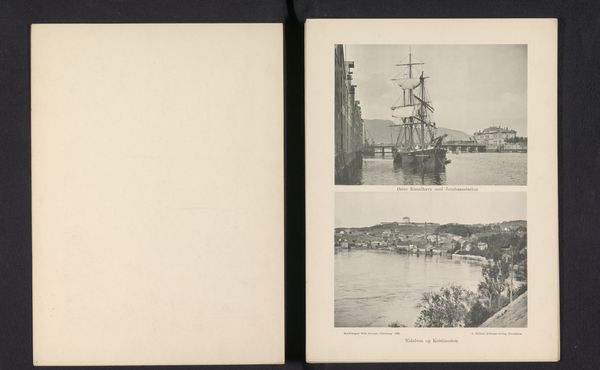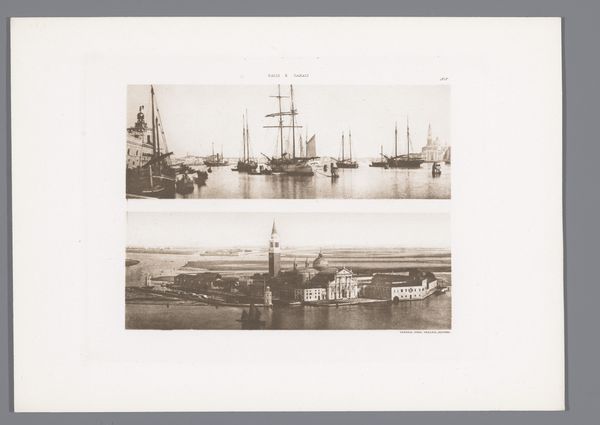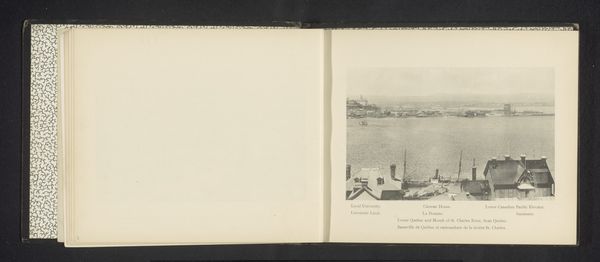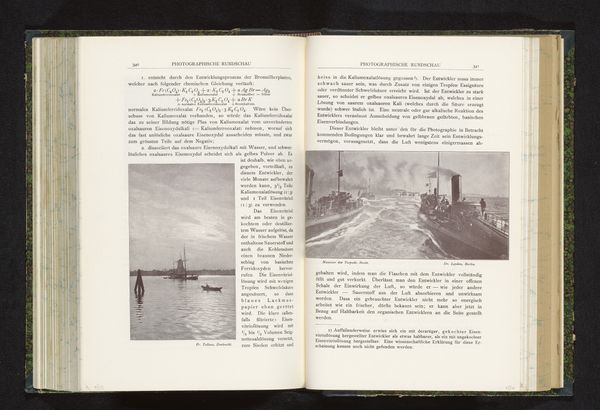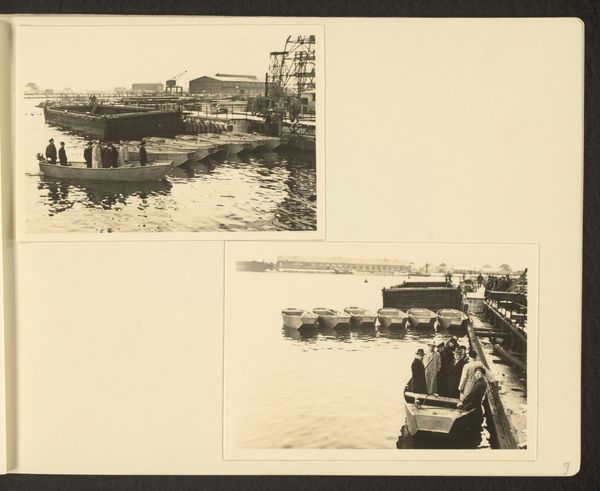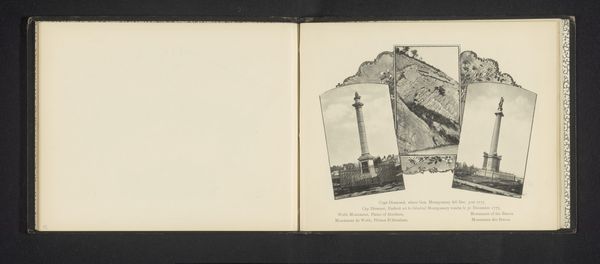
Dimensions: height 325 mm, width 240 mm
Copyright: Rijks Museum: Open Domain
Curator: Look at this compelling photographic print, likely a gelatin-silver print. The artwork, titled "Gezicht op schepen op het Trondheimfjord," by Wilhelm Dreesen, predates 1898. I'm immediately drawn in by its textured surface. Editor: There's a striking stillness about it, isn’t there? A peaceful, quiet moment captured on what appears to be aged paper. It almost has an ethereal quality. Curator: The visible aging adds a fascinating layer, reminding us of the photograph’s history as an object. Dreesen’s choice of gelatin-silver, a popular process during that time, is significant. It allowed for mass production and consumption of images, playing a key role in shaping how the world was viewed and disseminated. Think of the role these prints played, outside traditional museum spaces, in shaping public perception of distant places like Trondheim. Editor: It makes me think about who might have originally bought this image. Was it a souvenir for someone visiting Trondheim? Or was it a form of armchair travel for someone who could only dream of visiting? The mass production aspect is key, as these images undoubtedly influenced broader social perceptions of Scandinavia. Curator: Exactly. The content itself—the ships, the water, the architecture barely visible in the distance— speak to a moment of increasing industrialization, yet also highlights a very specific relationship of this area to shipbuilding and harbor life. These boats were vital not just for transit, but for local livelihoods. Editor: And, if we consider institutions like maritime museums and how they present such images, do they fully account for the socio-economic realities encoded within? Do they just become aesthetic objects devoid of deeper meaning about the labor that propelled them? Curator: An important consideration. What might appear initially as just an appealing seascape carries potent stories about production, circulation, and consumption, particularly during a period of dramatic global exchange and visual literacy. Editor: This photograph encourages one to examine those complexities - from labor to ownership and broader societal viewpoints embedded within. Curator: It makes you consider both the intimate view and its relation to macro-level shifts. It all comes down to context and use.
Comments
No comments
Be the first to comment and join the conversation on the ultimate creative platform.
